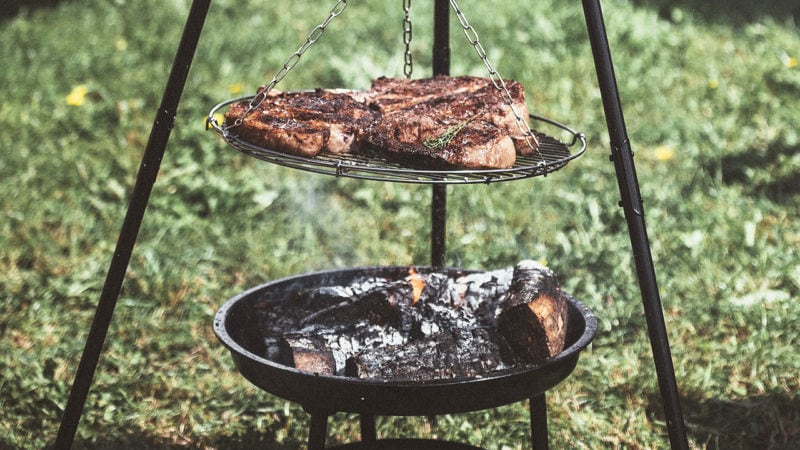Last Updated on September 23, 2021
One of the main staples in cuisine across South America is beef, but every country has a different way of preparing it. From traditional ranch meals in Colombia to the world-renowned steakhouses in Argentina, this continent has much to offer in the way of beef.
Lomo Saltado
Peru, home of Machu Picchu and some of the most stunning peaks in the Andes, is no stranger to world-class cuisine. By the coast, it’s all about ceviche. Inland, it’s lomo saltado—a beef-based stir-fry that is simple in its preparation and complex in flavor. The recipe has you cook the cubed beef in soy sauce with an array of vegetables like Peruvian potatoes. Then, you’ll season the dish with cumin, oregano, and cilantro. Lomo saltado is part of the “Chifa” foodway in Peru, which is a fusion of traditional Peruvian ingredients, Peru’s Creole food heritage, and Chinese Cantonese influences.
Recommended cut: Sirloin Steak
Bistec a Caballo
Bistec a caballo, which translates to “steak on horseback,” is a popular beef dish from Colombia.
Originating as a ranch meal, Colombians pair lightly seasoned grilled steak with hogao—a traditional tomato and onion salsa—and top everything with a fried egg. This dish is incredibly hearty, having the ability to satisfy even the largest appetites.
Recommended cut: New York Strip Steak or Ribeye Steak
Chimichuri Steak
Argentina is home to some of the best beef on earth. A parrillada, the name for a mixed plate barbecue in Argentina, is not complete without the central cut of meat—grilled steak with chimichurri. The light, oil-and-parsley-based chimichurri brings out the rich, savory flavor of the meat. For the full experience, pair with a Mendoza Malbec.
Recommended cut: Coulotte or Ribeye Steak
Seco de Carne con Tamarindo
Seco de carne con tamarindo is a beef stew cooked with tamarind, and a classic example of the creative, nutrient-packed cuisine of Ecuador. Secos are popular throughout Ecuador and each recipe is different, featuring a variety of meats, vegetables, and liquids. In Spanish, “seco” means dry, but these stews are anything but that. While the name’s origins are not clear, it may stem from using dry seasonings or cooking long enough to evaporate excess liquid. This seco recipe combines sweet tamarind juice, an array of vegetables, and spices to create a distinctive flavor. True to the name, it requires you to slow-cook the ingredients in beer on the stove. You can also use a slow cooker to save time. Pair this thick stew with rice, fried ripe bananas, potatoes, and avocado, or fried yuccas and a salad.
Recommended cut: Eye Round Roast
Cazuela de Vacuno
The Chilean stew known as cazuela de vacuno originated as a Mapuche soup known as “corri.” This dish combines a variety of Chilean produce, including pumpkin, corn, and potatoes into a body-warming stew. It originally included wild game and chicken, highlighting ingredients available in the region. In the 1500s, Spanish colonizers renamed the soup “cazuela” after the clay pot that was used to cook it. They also began adding beef, spices, and other Spanish ingredients to the mix. This hearty recipe uses brisket and a number of vegetables, making it perfect for a large family gathering.
Recommended cut: Beef Brisket
Picanha
The only barbecue to rival the Argentinian parillada is the Brazilian churrascaria. You may already be familiar with the all-you-can-eat experience at a churrascaria restaurant. However, the word “churrascaria” roughly translates to “grilled meat” in Portuguese. Restaurants cook the meat churrasco style (barbecued) and serve it in a rodízio style, or tableside and cut from large skewers. A must-have when in Brazil or at a churrascaria is the picanha, which is the Portuguese name for coulotte. The picanha features a flavorful fat cap, and once seasoned and set aside to rest, it is cut into thick chunks, skewered, and grilled. Feel free to serve this dish solo since it doesn’t lack in flavor.
Recommended cut: Coulotte



